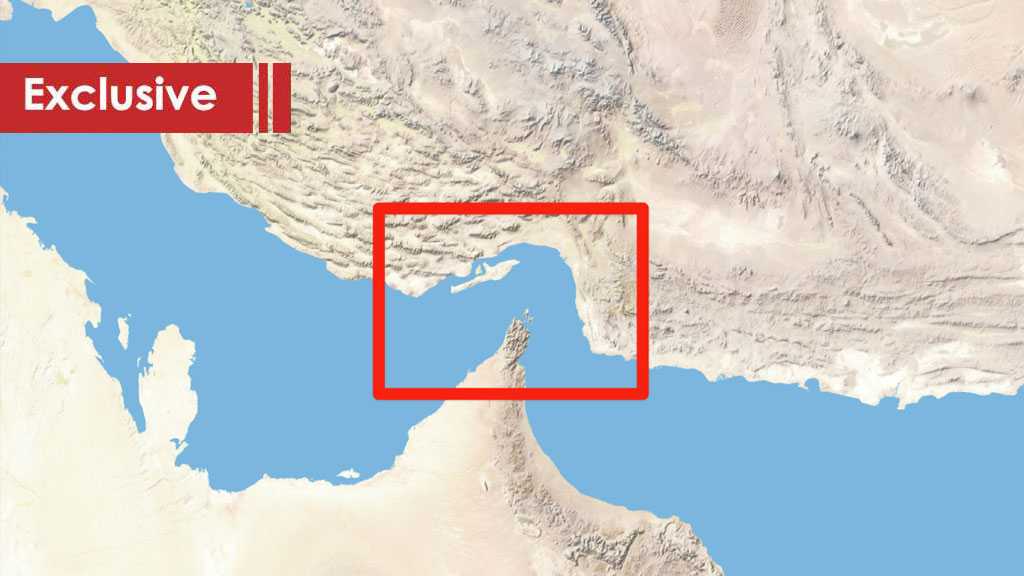What If Iran Shut Down the Strait of Hormuz?

By Youssef Al-Rayyes
Lebanon – Following the collapse of the Soviet Union, the United States rose to the apex of the global political order, establishing a unipolar system through its dominance over strategic waterways—and, by extension, global trade routes. However, with the emergence of new major world powers, the US has increasingly sought to maintain its global dominance by any means necessary.
One of the primary challenges facing US foreign policy today is the Silk Road initiative, which threatens to shift the dynamics of global trade from maritime to overland routes, thereby enabling China to assert greater control over international commerce. At the same time, the United States seeks to prevent any country from establishing dominance over strategic waterways. In this context, Iran’s geographic position underscores the significant American apprehension toward it—especially given its opposition to US hegemony in the region. Iran serves as a land bridge between East and West and overlooks the Strait of Hormuz, one of the world’s most vital maritime passages. This raises a crucial question: What if Iran were to close the Strait of Hormuz?
The Strategic Importance of the Strait of Hormuz
The Strait of Hormuz serves as the sole maritime gateway to the Gulf, separating Iran from Oman and the United Arab Emirates. It links the Gulf to the Gulf of Oman and the Arabian Sea in the Indian Ocean. At its narrowest point along the Iranian coast, the strait spans approximately 20 nautical miles, with a substantial portion lying within Iran’s territorial waters, which overlap with those of Oman to the south.
Approximately 20% of the world’s oil and a substantial share of natural gas transit through the Strait of Hormuz. Europe imports oil and liquefied natural gas from Gulf countries—including Saudi Arabia, Qatar, and the United Arab Emirates—much of which passes through this critical maritime corridor.
According to the International Energy Agency [IEA], roughly 70% of the oil transiting the Strait of Hormuz is destined for Asian markets, with China, India, and Japan among the primary recipients.
The Implications of Closing the Strait of Hormuz
Although alternative infrastructure exists in the form of pipelines, it remains limited. The IEA estimates that only around 4.2 million barrels per day of crude oil can be rerouted via overland routes, such as Saudi Arabia’s East-West pipeline to the Red Sea and Abu Dhabi’s crude oil pipeline to Fujairah. This capacity represents barely a quarter of the typical daily volume that flows through the Strait.
Consequently, if Iran were to close the Strait, Europe would face an energy shortage—especially in countries dependent on fuel from the Middle East. Even nations that do not import oil directly from Gulf countries would be affected, as the substantial supply disruption would push global oil prices higher.
The sudden surge in oil prices would also drive higher inflation and increased energy costs, disrupting industries throughout Europe and Asia. The manufacturing, transportation, and agriculture sectors would be especially vulnerable.
Beyond oil, the Strait of Hormuz is a crucial global shipping corridor. Any disruption to navigation could delay Europe’s imports of raw materials, electronics, and consumer goods, thereby straining supply chains. Rising shipping insurance premiums would further increase costs for businesses and consumers worldwide. As a result, global production would decline, impacted by soaring prices of oil and raw materials—prices that could spike dramatically if Iran were to close the Strait. This scenario would present a substantial economic challenge globally. Crises of this magnitude may lead to slower growth, rising unemployment and inflation, and volatile currency markets. The global economy—or certain regional economies—could even slip into recession.
European and global stock markets are expected to exhibit volatility, depending on the sectors and countries most impacted by the potential energy crisis and investor reactions. However, it is likely that share prices in sectors vulnerable to production disruptions—such as manufacturing, agriculture, and transportation—will experience significant declines.
Both the Islamic Republic of Iran and the international community recognize that the Strait of Hormuz serves as a strategic economic weapon, comparable in significance to Iran’s advanced military capabilities—and potentially even more damaging if Iran chooses to employ it. Tehran may also use this leverage selectively, considering that 70% of the crude oil transiting the Strait is destined for Asian markets. Given China’s alliance with Iran, a complete closure of the Strait would not align with its interests. Consequently, Iran might pursue a partial closure designed to shield Chinese companies from the full impact of an oil crisis.
All these potential scenarios may pale in comparison to a far more significant development: the erosion of American dominance over strategic waterways, and consequently, its diminishing control over global trade. How, then, would the United States respond in such circumstances?




